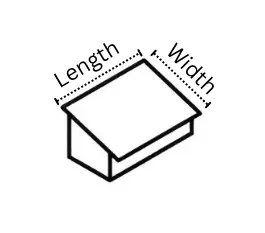Gutter Slope Calculator – Get the Perfect Drainage Slope
Use our free Gutter Slope Calculator to find the perfect slope for your gutters. Enter gutter length and slope or total drop to ensure proper drainage.

A proper gutter slope ensures that water flows smoothly to the downspouts, preventing standing water and leaks. This Gutter Slope Calculator helps you determine either the total drop needed over the length of your gutter or the slope per foot (or per meter).
Formula 1: Total Drop over Gutter Length
If you know the desired slope (in inches per foot or mm per meter):
Formula 2: Slope per Unit Length
If you know the total drop and the gutter length, you can compute slope per foot (or per meter):
Example Calculation
Let’s say:
- Gutter Length = 40 ft
- Desired Slope per Foot = 0.25 in/ft
Step 1: Total Drop
Step 2: Slope per Foot (Reverse Calculation Example)
If you only know the total drop (10 inches) and gutter length (40 ft):
Final Answer:
- Total Drop Required: 10 inches
- Slope per Foot: 0.25 in/ft
FAQs
1. What is the recommended slope for gutters?
Gutters should slope at least ¼ inch per 10 feet toward the downspout for effective drainage. This standard ensures water flows smoothly without pooling, though steeper roofs may need up to ½ inch per 10 feet for better performance. In metric, aim for about 1 cm per 3.5 meters.
2. Why is proper gutter slope important for homes?
A correct gutter slope promotes efficient water flow to downspouts, preventing standing water that causes overflows, erosion, or foundation damage. It reduces leak risks and extends gutter lifespan, especially on longer runs where improper sloping leads to uneven drainage and costly repairs.
3. How do you calculate the required gutter slope?
Measure gutter length and apply ¼ inch drop per 10 feet (or 1/16 inch per foot). For example, a 40-foot run needs a 1-inch total drop. Use a level and string line during installation to verify, adjusting for roof pitch if needed.
4. What are signs of improper gutter slope?
Look for water pooling in sections away from downspouts, leaks at the far end, or slow drainage during rain. These indicate insufficient slope, leading to overflows and potential structural issues. Inspect annually and adjust to the standard ¼ inch per 10 feet.